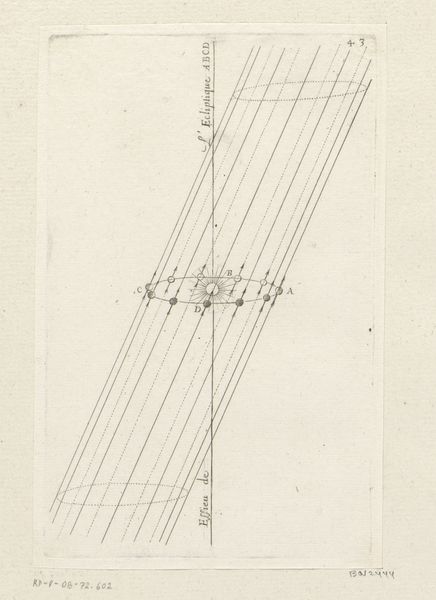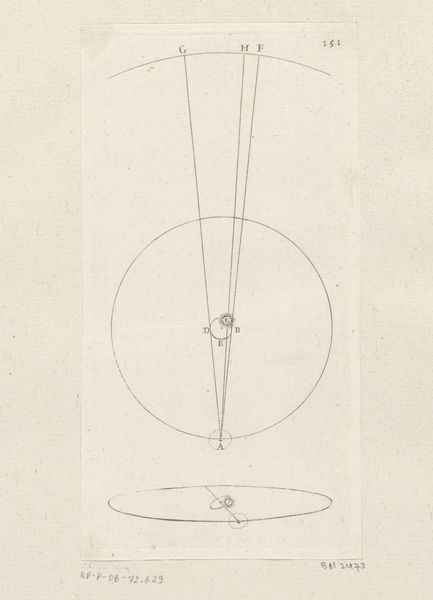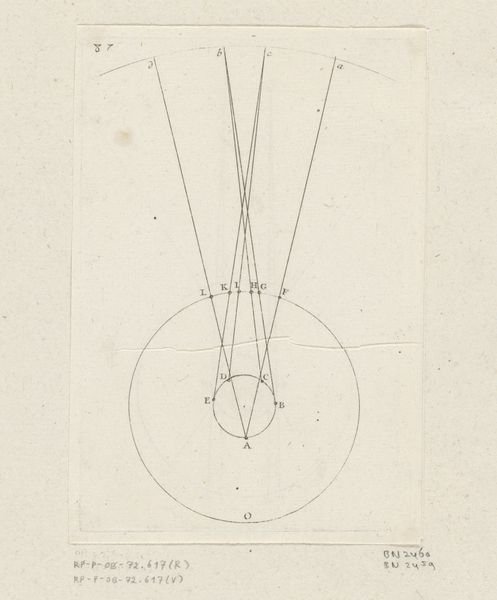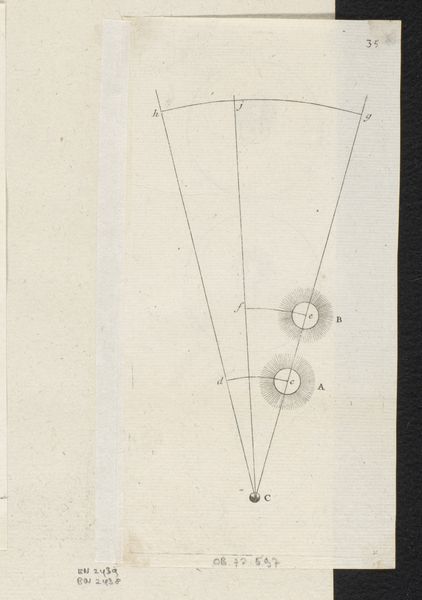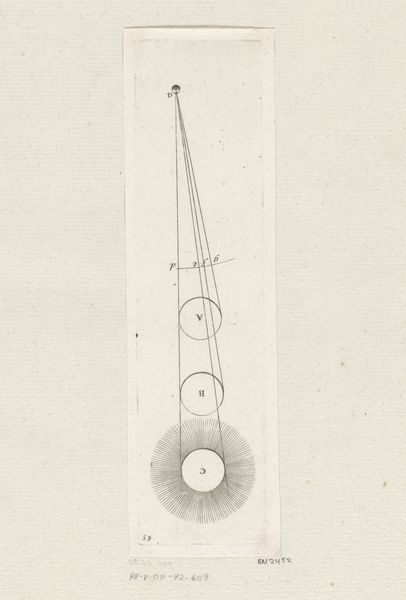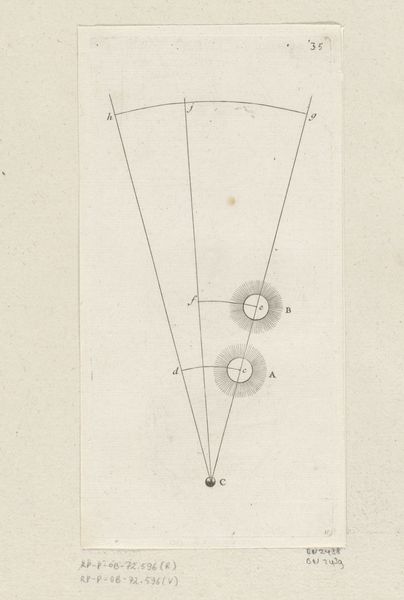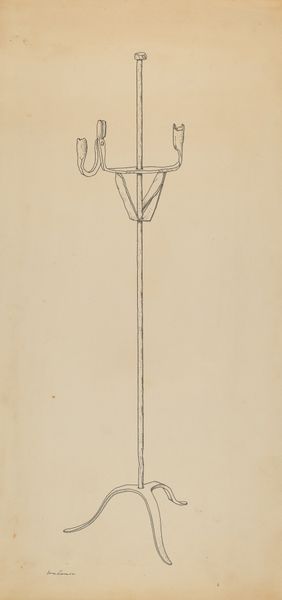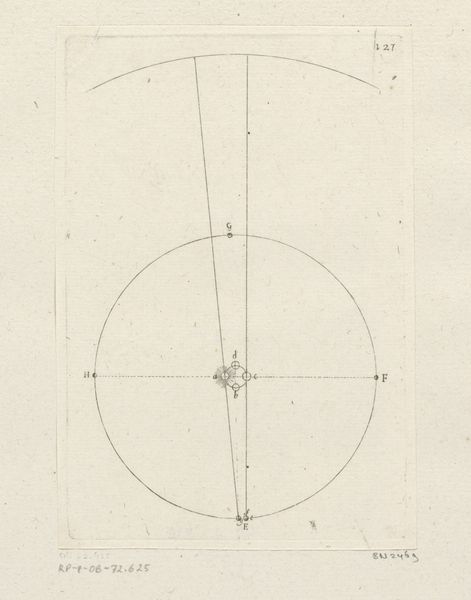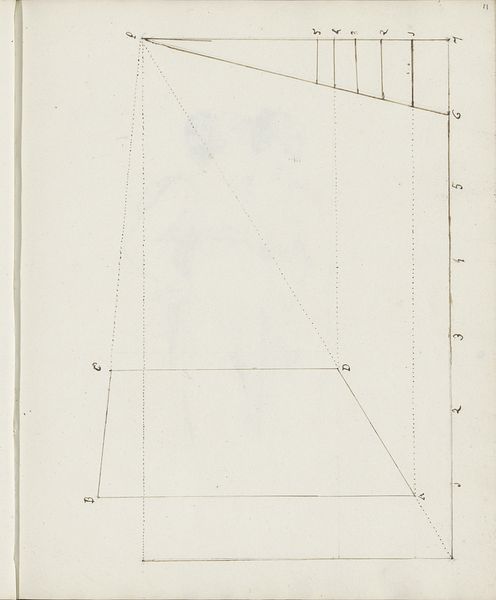
drawing, print, graphite, engraving
#
drawing
#
aged paper
# print
#
geometric
#
line
#
graphite
#
history-painting
#
academic-art
#
engraving
Dimensions: height 171 mm, width 88 mm
Copyright: Rijks Museum: Open Domain
Curator: Here at the Rijksmuseum, we have a work titled "Paths of the Sun, Earth, and Saturn" by Sébastien Leclerc I, created around 1706. It's a fascinating drawing and print. Editor: It has a very stark feel. All these precisely drawn lines on what looks like aged paper; it's austere but undeniably intriguing. Almost unsettling, really. Curator: Well, it is a diagram depicting planetary orbits according to theories popular at the time. Leclerc was connected to academic circles in Paris and served Louis XIV. This sort of visual representation would have been key to understanding the cosmos as it was conceived then. Think of the role imagery played in shaping scientific and societal understanding! Editor: I see the social capital attached. But focusing on the drawing itself, look at the lines. Engraving demands a very specific skill; transferring the vision onto a copper plate, and the graphite provides this amazing contrast, a tension between what’s sketched versus what's fixed. Was this intended to be disseminated widely? The medium implies reproduction, circulation... Curator: Exactly! The intent wasn't just artistic expression. It was knowledge dissemination, part of the broader Enlightenment project of making information accessible to a wider audience. Leclerc, through his prints, participated in that democratization. Editor: Democratization, perhaps, within certain literate, educated circles. We should remember who had access to these prints. And what about the engravers, the printers—what were their lives like as they labored over producing these diagrams of elite knowledge? Were they shareholders in this cultural capital? Curator: That's a fair point, emphasizing the labor behind such 'intellectual' productions. It broadens the conversation from the content of the image to the means and context of its creation and distribution, absolutely. It also begs to acknowledge, however, the level of scientific engagement available at the time. Editor: Indeed, understanding how knowledge was constructed materially and socially at that moment is critical to deciphering both its value and limitations today. And look, there are watermarks that could lead back to where this paper was produced, suggesting insights into trading networks as well... Curator: What a fascinating journey into knowledge, power, labor and material that brings us back to consider our world, as well as Leclerc's era. Editor: It shows there are indeed multiple layers of knowledge intertwined in the practice. Thank you!
Comments
No comments
Be the first to comment and join the conversation on the ultimate creative platform.
